Abstract
Klebsiellas are generally typed by the method of capsular serotyping but, although this is a reliable method, it is time consuming, requires the production of a large number of antisera and is not generally available. For this reason another method for typing klebsiellas was sought. A bacteriocin typing method involving mitomycin C induction was developed and the cultural conditions giving optimum klebecin production and the best methods of testing the sensitivity of the organisms to klebecins were determined. Of 190 klebsiella strains screened for bacteriocinogeny, only 68 (35.8%) produced klebecin and after calculation of similarity values by computer analysis, a typing set of 15 producers was selected. This typing set allowed over 96% of klebsiella strains to be typed and tests of the reproducibility of the method and the variability of typing patterns in natural populations of klebsiella indicated that results of acceptable accuracy could be obtained, while retaining good discrimination if two or more differences were required between patterns before they were regarded as distinct. A complete set of capsular antisera were prepared, enabling the results obtained from klebecin typing to be compared with those from serotyping. There was generally close agreement between the results from the two typing methods and greater discrimination was obtained between similar strains when the two methods were combined. Klebecin typing and serotyping revealed relationships between strains from five outbreaks of infection, and strains of the same serotype from different hospitals could frequently be distinguished by their klebecin typing patterns.
Full text
PDF
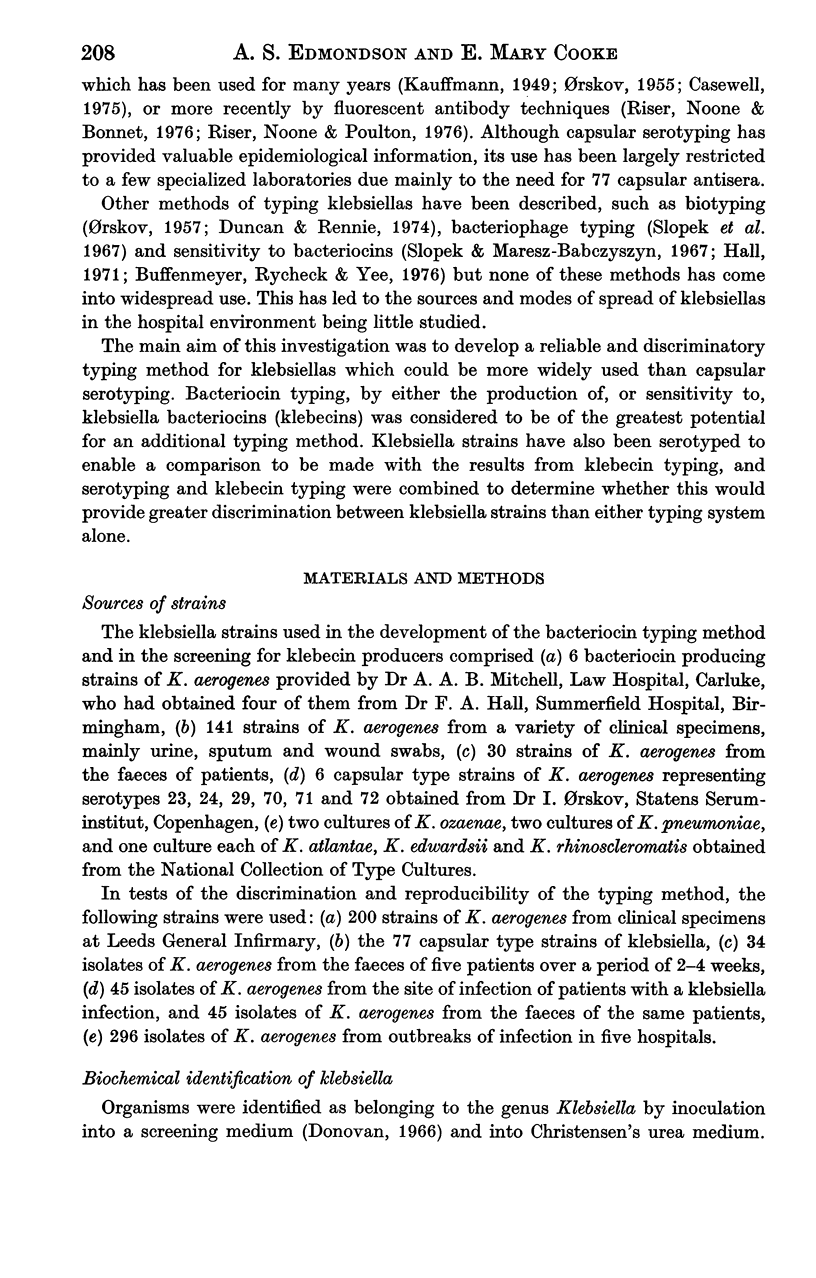
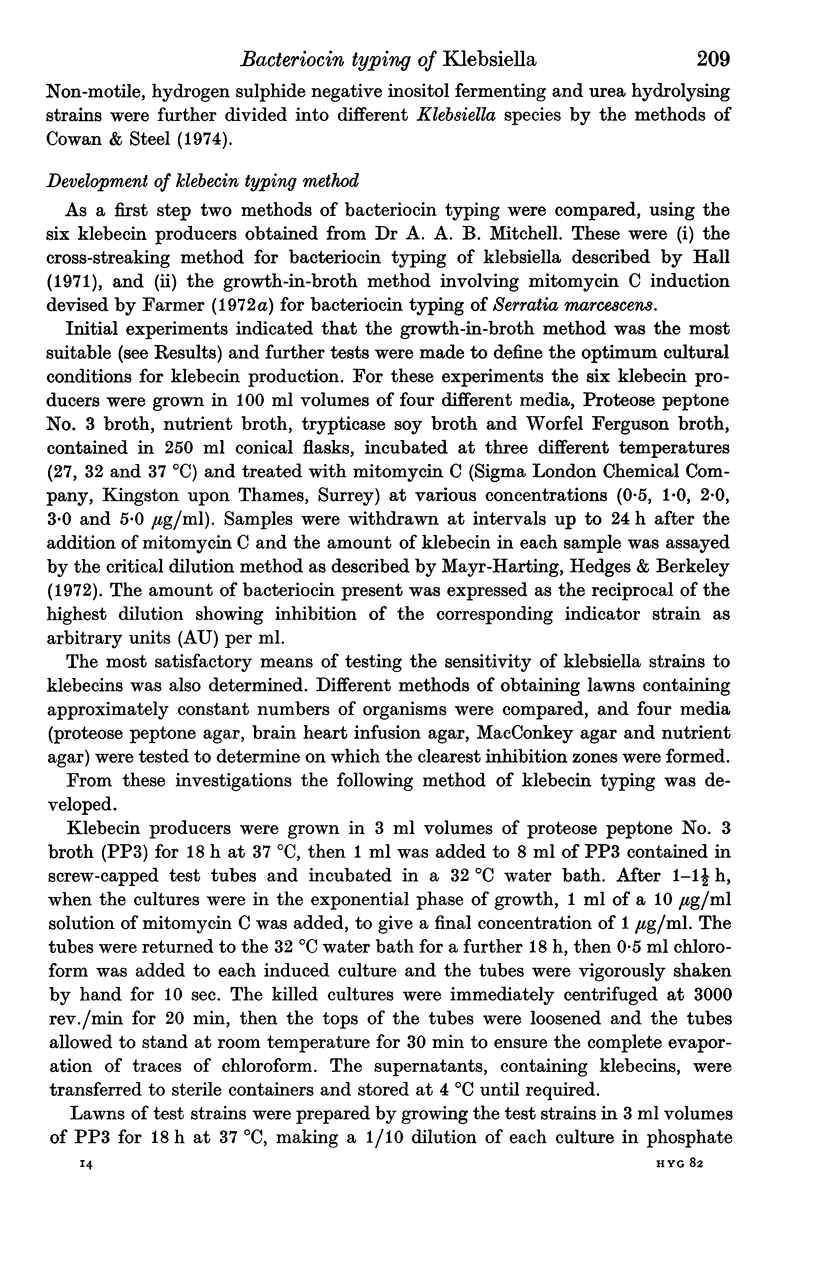
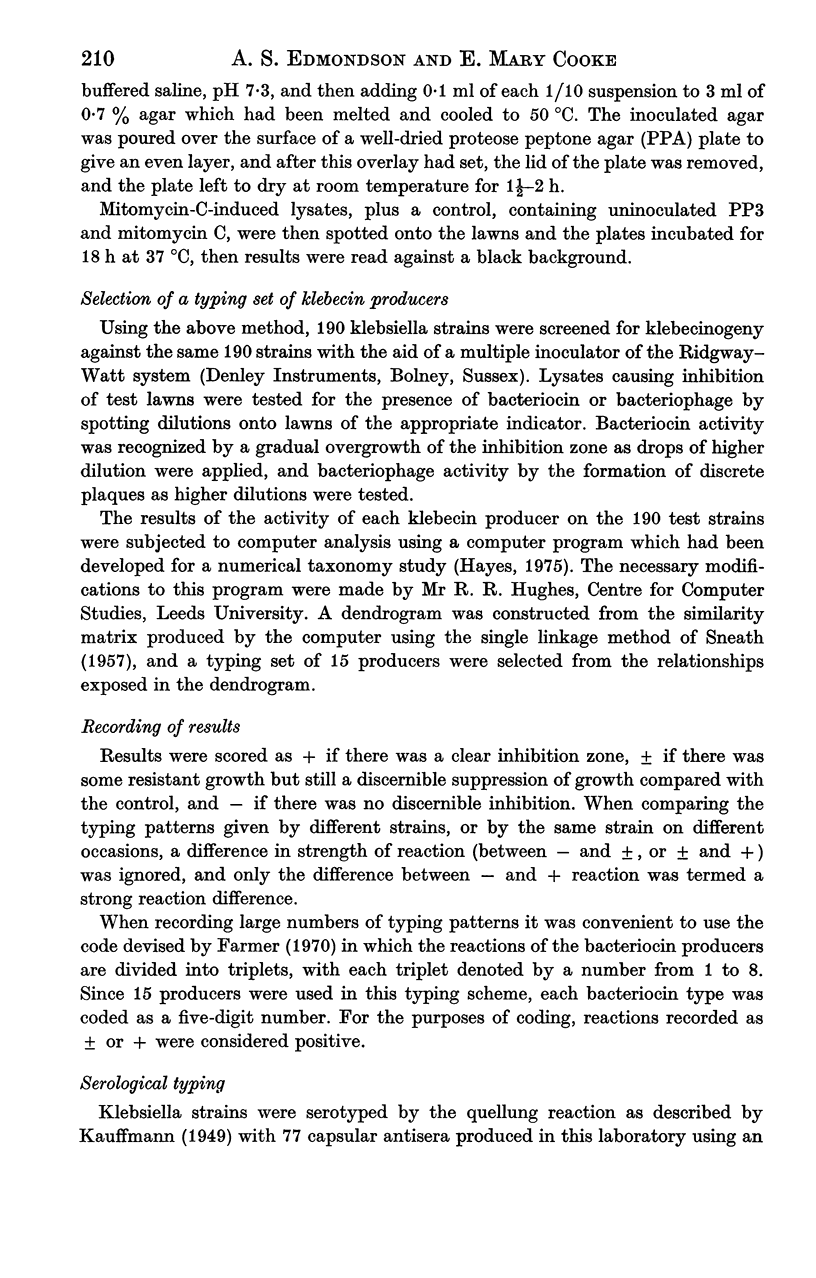
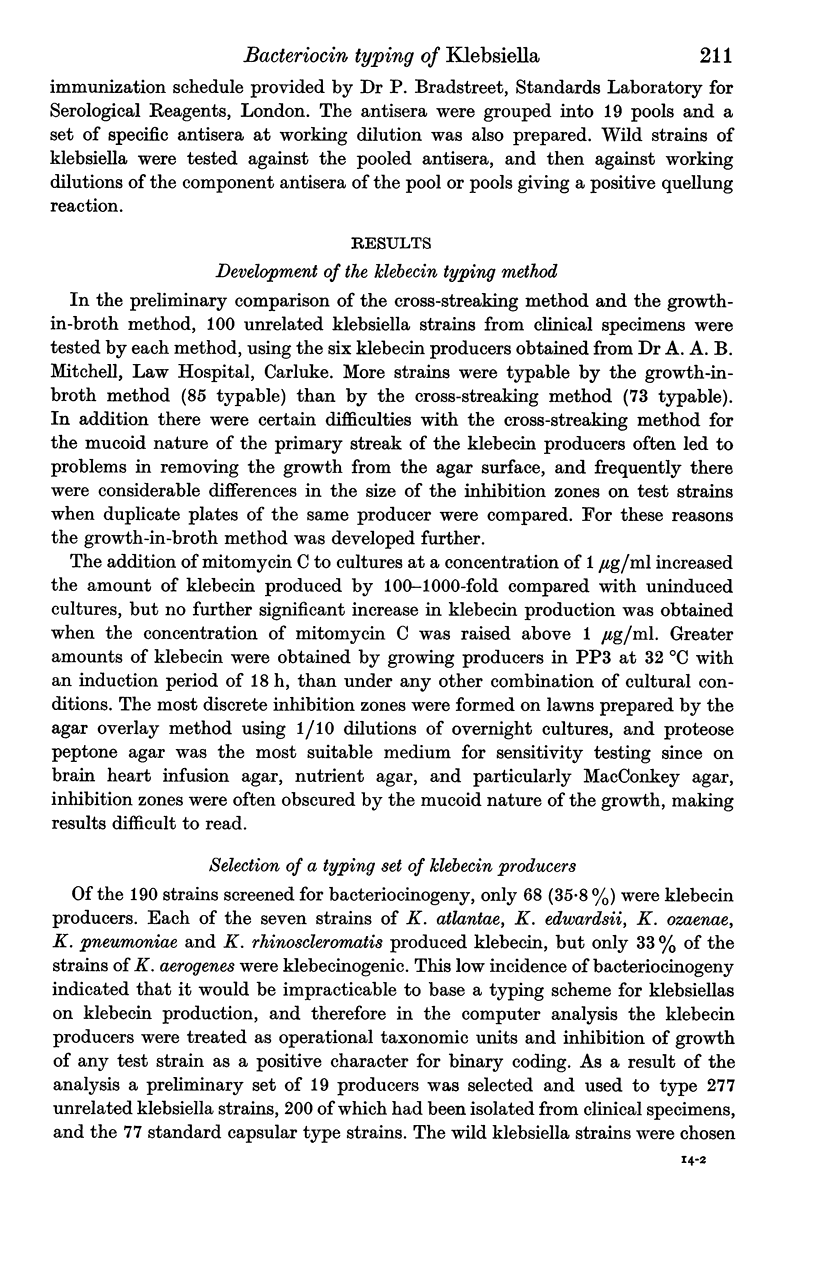
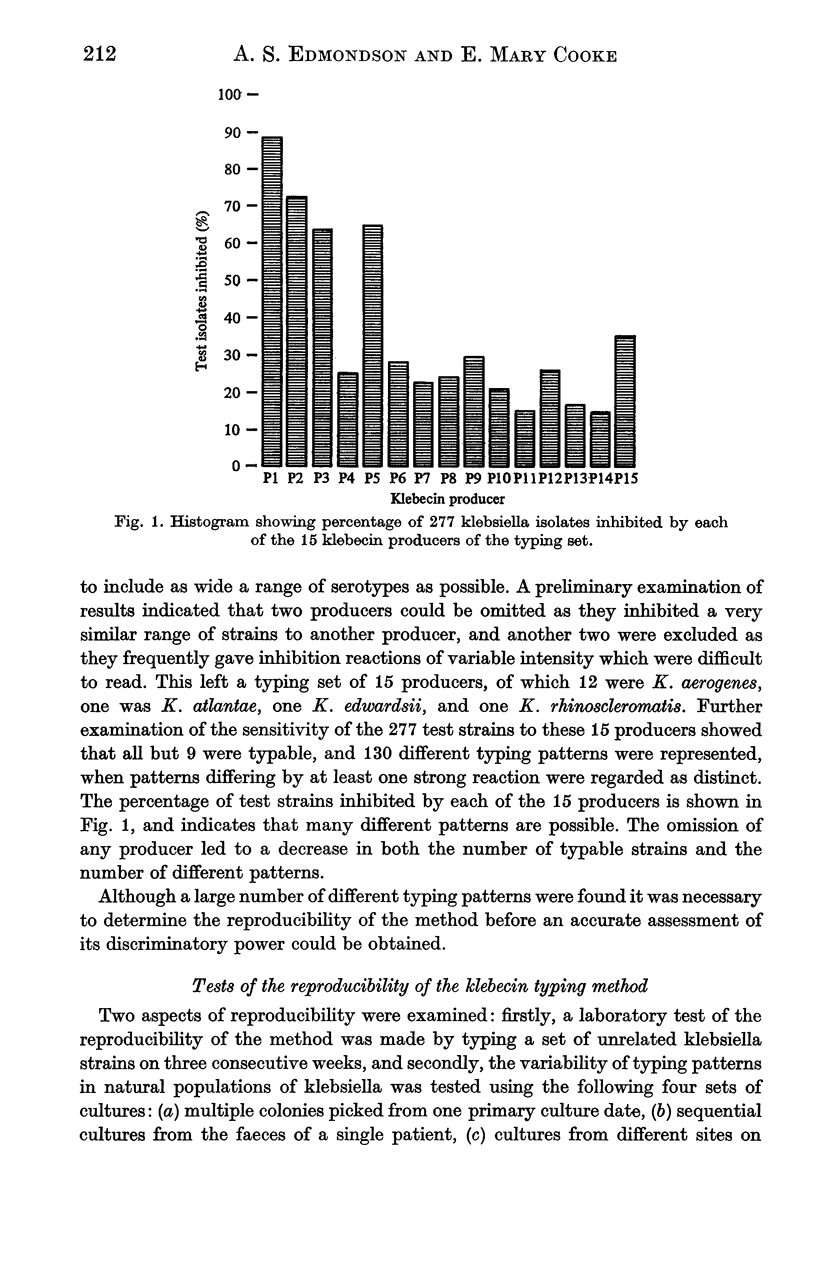

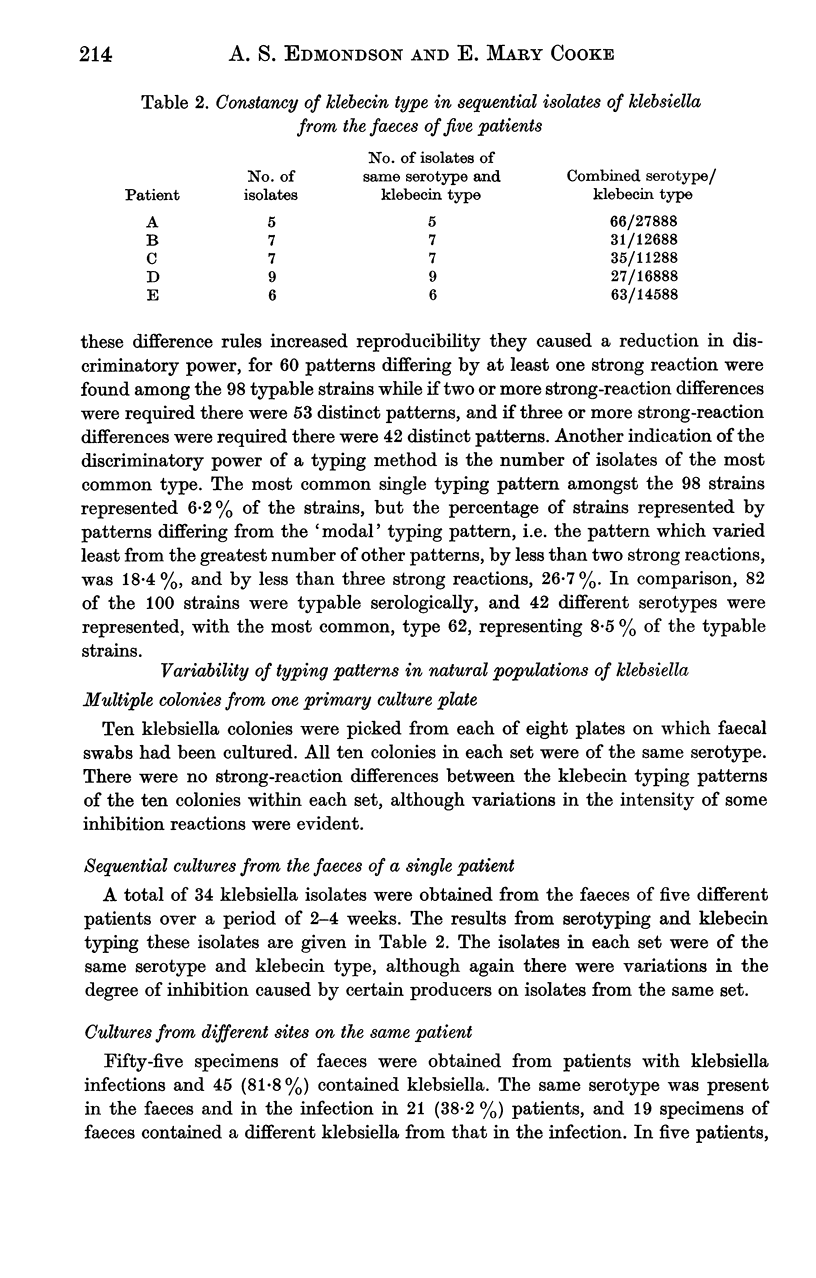

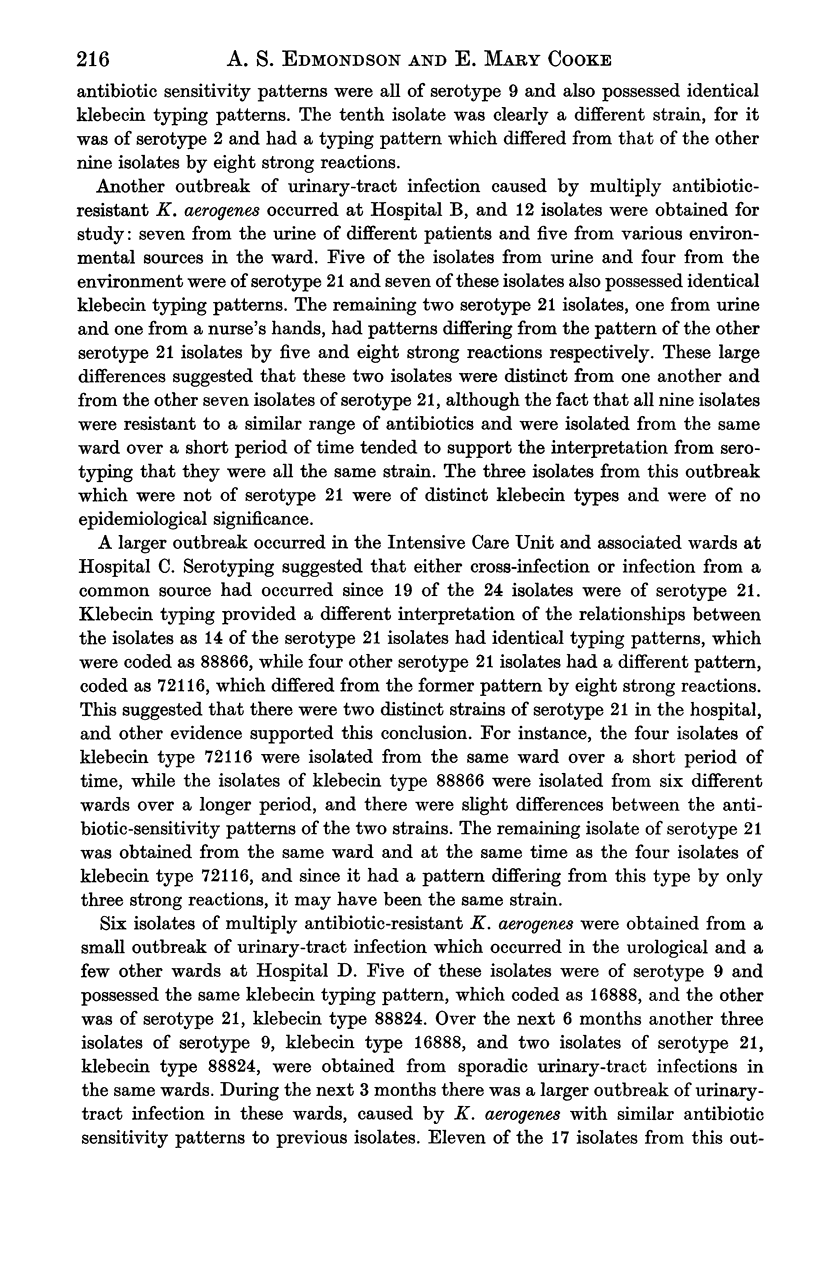
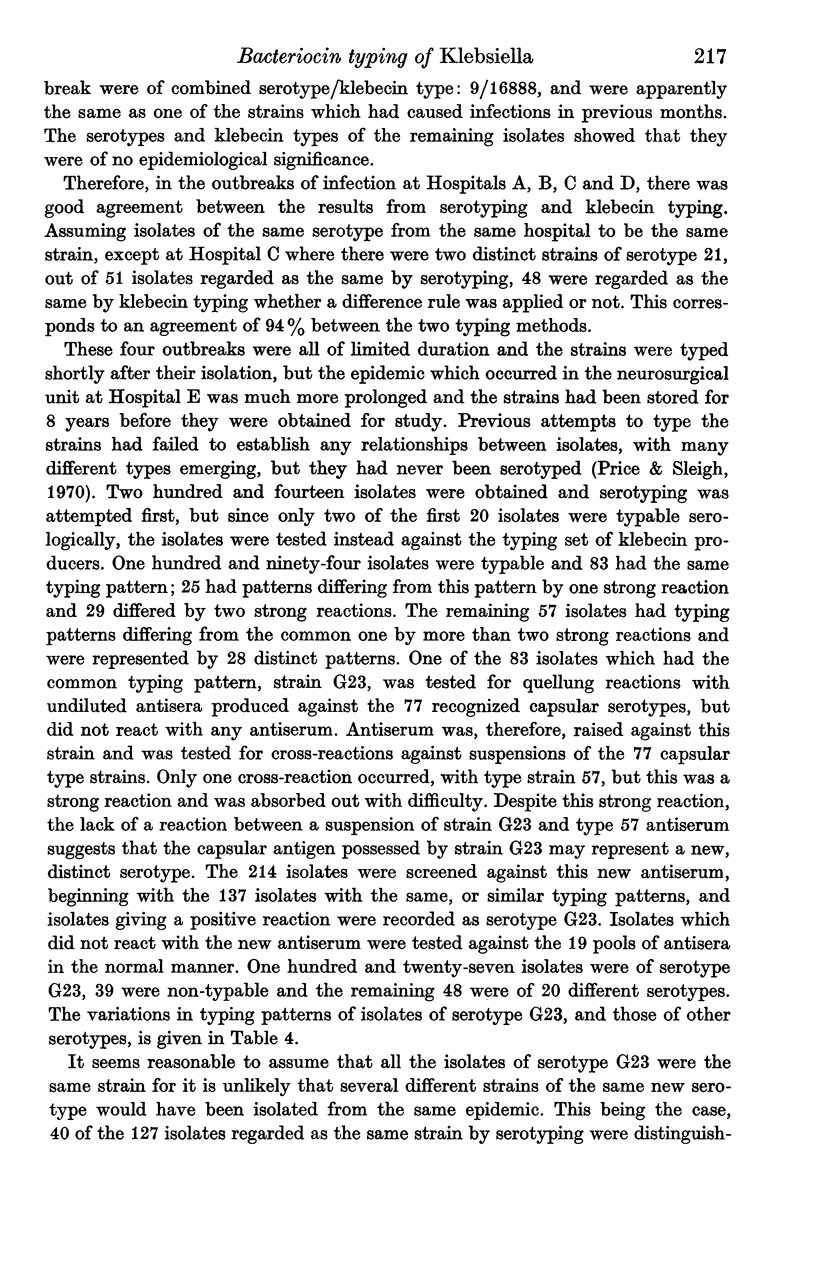



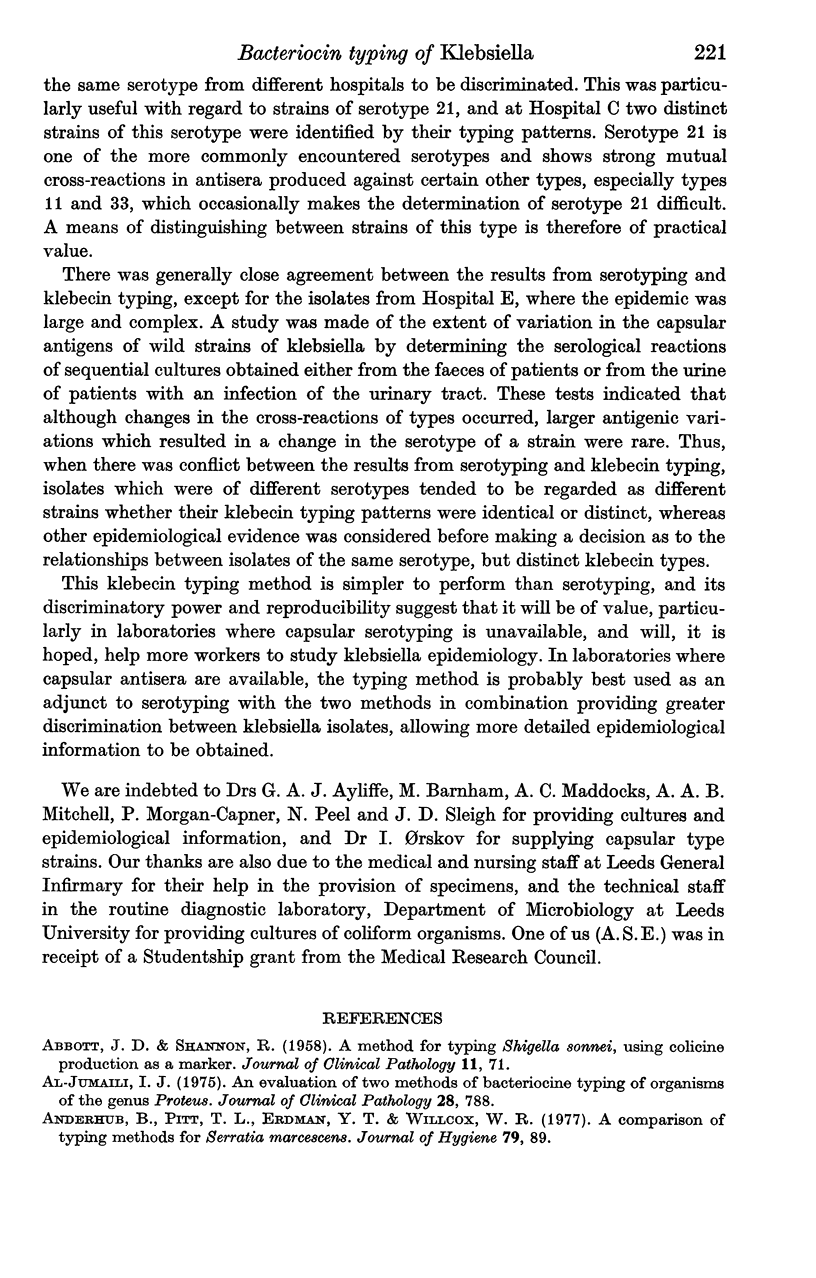
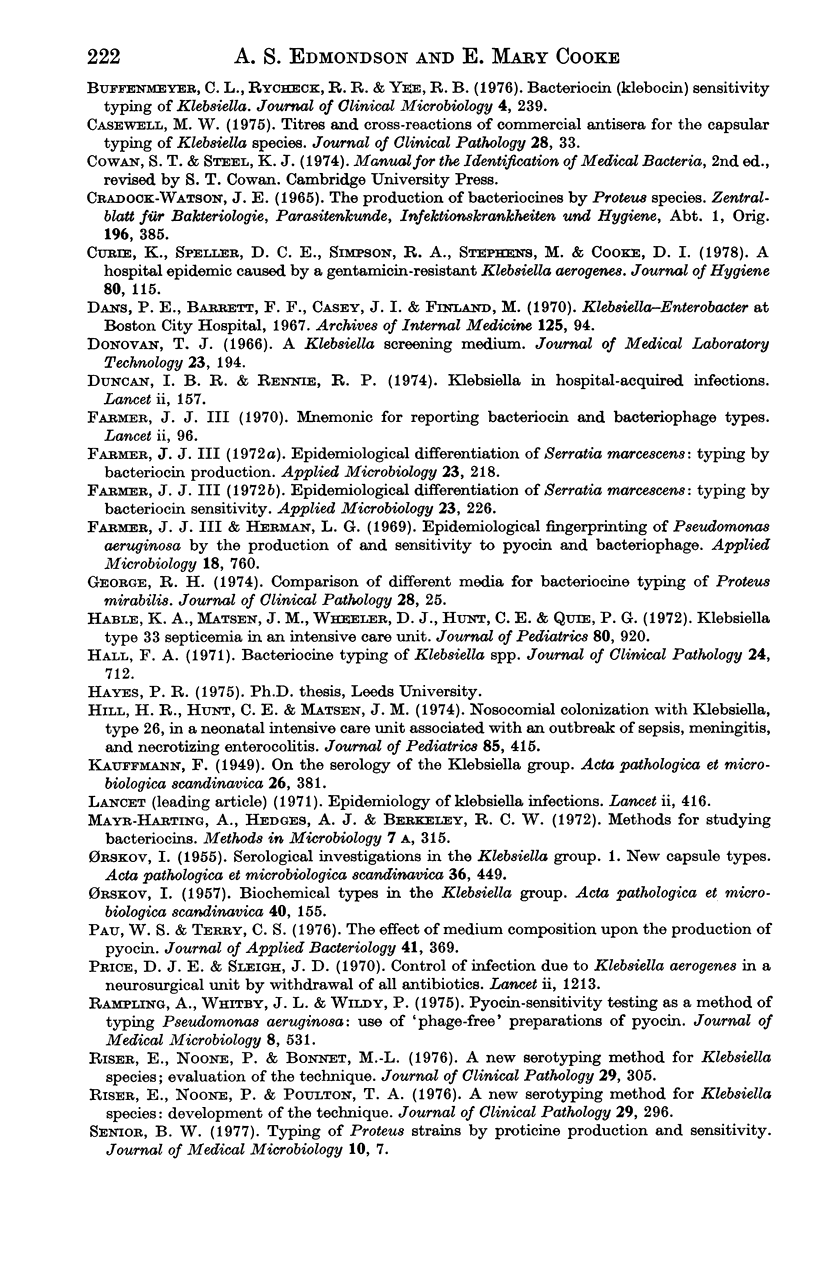
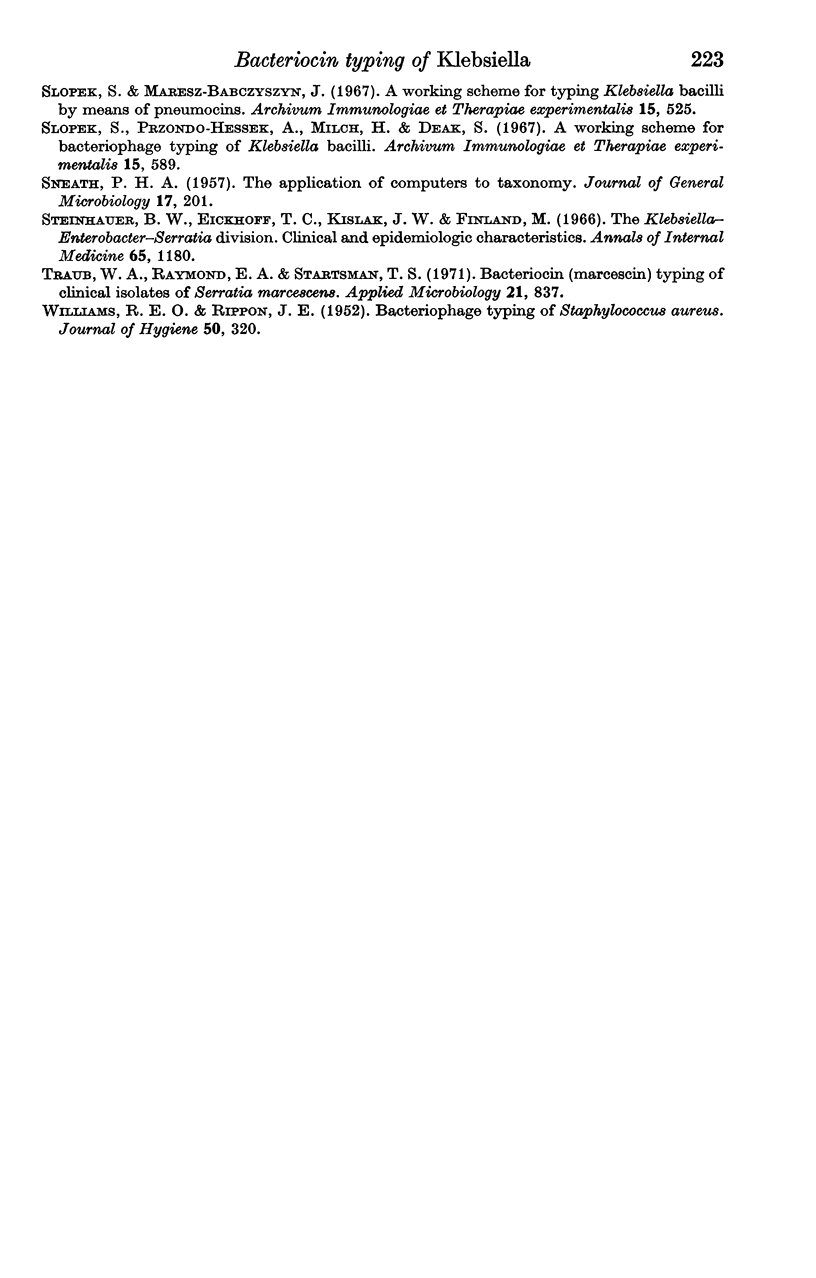
Selected References
These references are in PubMed. This may not be the complete list of references from this article.
- ABBOTT J. D., SHANNON R. A method for typing Shigella sonnei, using colicine production as a marker. J Clin Pathol. 1958 Jan;11(1):71–77. doi: 10.1136/jcp.11.1.71. [DOI] [PMC free article] [PubMed] [Google Scholar]
- Al-Jumaili I. J. An evaluation of two methods of bacteriocine typing of organisms of the genus Proteus. J Clin Pathol. 1975 Oct;28(10):788–792. doi: 10.1136/jcp.28.10.788. [DOI] [PMC free article] [PubMed] [Google Scholar]
- Anderhub B., Pitt T. L., Erdman Y. J., Willcox W. R. A comparison of typing methods for Serratia marcescens. J Hyg (Lond) 1977 Aug;79(1):89–102. doi: 10.1017/s0022172400052888. [DOI] [PMC free article] [PubMed] [Google Scholar]
- Buffenmyer C. L., Rycheck R. R., Yee R. B. Bacteriocin (klebocin) sensitivity typing of klebsiella. J Clin Microbiol. 1976 Sep;4(3):239–244. doi: 10.1128/jcm.4.3.239-244.1976. [DOI] [PMC free article] [PubMed] [Google Scholar]
- Casewell M. W. Titres and cross reactions of commercial antisera for the capsular typing of Klebsiella species. J Clin Pathol. 1975 Jan;28(1):33–36. doi: 10.1136/jcp.28.1.33. [DOI] [PMC free article] [PubMed] [Google Scholar]
- Curie K., Speller D. C., Simpson R. A., Stephens M., Cooke D. I. A hospital epidemic caused by gentamicin-resistant Klebsiella aerogenes. J Hyg (Lond) 1978 Feb;80(1):115–123. doi: 10.1017/s0022172400053432. [DOI] [PMC free article] [PubMed] [Google Scholar]
- Dans P. E., Barrett F. F., Casey J. I., Finland M. Klebsiella-Enterobacter at Boston City Hospital, 1967. Arch Intern Med. 1970 Jan;125(1):94–101. [PubMed] [Google Scholar]
- Donovan T. J. A Klebsiella screening medium. J Med Lab Technol. 1966 Jul;23(3):194–197. [PubMed] [Google Scholar]
- Duncan I. B., Rennie R. P. Letter: Klebsiella in hospital-acquired infections. Lancet. 1974 Jul 20;2(7873):157–157. doi: 10.1016/s0140-6736(74)91578-5. [DOI] [PubMed] [Google Scholar]
- Farmer J. J., 3rd Epidemiological differentiation of Serratia marcescens: typing by bacteriocin production. Appl Microbiol. 1972 Feb;23(2):218–225. doi: 10.1128/am.23.2.218-225.1972. [DOI] [PMC free article] [PubMed] [Google Scholar]
- Farmer J. J., 3rd Epidemiological differentiation of Serratia marcescens: typing by bacteriocin sensitivity. Appl Microbiol. 1972 Feb;23(2):226–231. doi: 10.1128/am.23.2.226-231.1972. [DOI] [PMC free article] [PubMed] [Google Scholar]
- Farmer J. J., 3rd, Herman L. G. Epidemiological fingerprinting of Pseudomonas aeruginosa by the production of and sensitivity of pyocin and bacteriophage. Appl Microbiol. 1969 Nov;18(5):760–765. doi: 10.1128/am.18.5.760-765.1969. [DOI] [PMC free article] [PubMed] [Google Scholar]
- Farmer J. J., 3rd Mnemonic for reporting bacteriocin and bacteriophage types. Lancet. 1970 Jul 11;1(7663):96–96. doi: 10.1016/s0140-6736(70)92663-2. [DOI] [PubMed] [Google Scholar]
- George R. H. Comparison of different media for bacteriocine typing of Proteus mirabilis. J Clin Pathol. 1975 Jan;28(1):25–28. doi: 10.1136/jcp.28.1.25. [DOI] [PMC free article] [PubMed] [Google Scholar]
- Hable K. A., Matsen J. M., Wheeler D. J., Hunt C. E., Quie P. G. Klebsiella type 33 septicemia in an infant intensive care unit. J Pediatr. 1972 Jun;80(6):920–924. doi: 10.1016/s0022-3476(72)80002-7. [DOI] [PubMed] [Google Scholar]
- Hall F. A. Bacteriocine typing of Klebsiella spp. J Clin Pathol. 1971 Nov;24(8):712–716. doi: 10.1136/jcp.24.8.712. [DOI] [PMC free article] [PubMed] [Google Scholar]
- Hill H. R., Hunt C. E., Matsen J. M. Nosocomial colonization with Klebsiella, type 26, in a neonatal intensive-care unit associated with an outbreak of sepsis, meningitis, and necrotizing enterocolitis. J Pediatr. 1974 Sep;85(3):415–419. doi: 10.1016/s0022-3476(74)80133-2. [DOI] [PubMed] [Google Scholar]
- Pau W. S., Terry C. S. The effect of medium composition upon the production of pyocin. J Appl Bacteriol. 1976 Dec;41(3):369–377. doi: 10.1111/j.1365-2672.1976.tb00648.x. [DOI] [PubMed] [Google Scholar]
- Price D. J., Sleigh J. D. Control of infection due to Klebsiella aerogenes in a neurosurgical unit by withdrawal of all antibiotics. Lancet. 1970 Dec 12;2(7685):1213–1215. doi: 10.1016/s0140-6736(70)92179-3. [DOI] [PubMed] [Google Scholar]
- Rampling A., Whitby J. L., Wildy P. Pyocin-sensitivity testing as a method of typing Pseudomonas aeruginosa: use of "phage-free" preparations of pyocin. J Med Microbiol. 1975 Nov;8(4):531–541. doi: 10.1099/00222615-8-4-531. [DOI] [PubMed] [Google Scholar]
- Riser E., Noone P., Bonnet M. L. A new serotyping method for Klebsiella species: evaluation of the technique. J Clin Pathol. 1976 Apr;29(4):305–308. doi: 10.1136/jcp.29.4.305. [DOI] [PMC free article] [PubMed] [Google Scholar]
- Riser E., Noone P., Poulton T. A. A new serotyping method for Klebsiella species: development of the technique. J Clin Pathol. 1976 Apr;29(4):296–304. doi: 10.1136/jcp.29.4.296. [DOI] [PMC free article] [PubMed] [Google Scholar]
- SNEATH P. H. The application of computers to taxonomy. J Gen Microbiol. 1957 Aug;17(1):201–226. doi: 10.1099/00221287-17-1-201. [DOI] [PubMed] [Google Scholar]
- Senior B. W. Typing of Proteus strains by proticine production and sensitivity. J Med Microbiol. 1977 Feb;10(1):7–17. doi: 10.1099/00222615-10-1-7. [DOI] [PubMed] [Google Scholar]
- Slopek S., Maresz-Babczyszyn J. A working scheme for typing Klebsiella bacilli by means of pneumocins. Arch Immunol Ther Exp (Warsz) 1967;15(4):525–529. [PubMed] [Google Scholar]
- Slopek S., Przondo-Hessek A., Milch H., Deák S. A working scheme for bacteriophage typing of Klebsiella bacilli. Arch Immunol Ther Exp (Warsz) 1967;15(4):589–599. [PubMed] [Google Scholar]
- Traub W. H., Raymond E. A., Startsman T. S. Bacteriocin (Marcescin) typing of clinical isolates of Serratia marcescens. Appl Microbiol. 1971 May;21(5):837–840. doi: 10.1128/am.21.5.837-840.1971. [DOI] [PMC free article] [PubMed] [Google Scholar]
- WILLIAMS R. E. O., RIPPON J. E. Bacteriophage typing of Staphylococcus aureus. J Hyg (Lond) 1952 Sep;50(3):320–353. doi: 10.1017/s002217240001963x. [DOI] [PMC free article] [PubMed] [Google Scholar]


